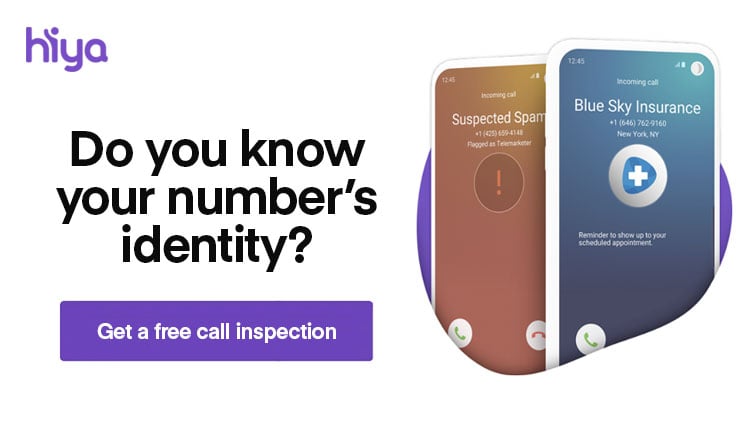Hiya, the industry leader in nuisance and scam call protection, has seen spam calls rise 49% since this time last year (January through November 2019), based on data the company analyzes from more than 13 billion calls per month. The data also finds more than 2.1 billion spam calls were made in 2019, with the average Canadian receiving six unwanted calls per month.
Below are some key findings from Hiya’s Canada State of the Spam Call report, which includes data surrounding nuisance and scam calls:
MOST POPULAR PHONE SCAMS:
Phone fraudsters use various techniques when calling their victims. According to Hiya’s data, the most common types of scams that fraudsters are using to target Canadians include:
- The Immigration Scam: Scammers are posing as immigration officers to trick new Canadian residents or those working through the Canadian immigration system. Victims are told they have incorrectly completed and submitted immigration documents which are required by law.
- The Emergency/Grandparent Scam: Scammers will target senior citizens in the early morning or late at night, to better the chance that the victim is disoriented. They then claim that the victim’s grandchild is in trouble and in need of money. The scammer demands that the grandparent send money immediately through a wire transfer service.
- The Inheritance Scam: Scammers will call a victim asking if they are aware that a relative has a large sum of cash in a bank overseas. They usually pose as a lawyer, government representative, banker or foreign government official. They will go to great lengths to convince the victim that the fortune is real, and that they will need their personal and financial information to claim the lump sum.
- Tech Support Scams: Scammers target older people by notifying them that there is a problem with their computer, which can be fixed for a fee. They then trick them into downloading malware by sending them a link that then infects their computer with a virus. Scammers can also trick victims into handing over financial information and personal details over the phone.
TOP AREA CODES:
To help Canadians avoid these calls, Hiya has identified the top area codes where these scams appear to originate:
- 647 (Toronto)
- 416 (Ontario)
- 519 (Southwestern Ontario)
- 604 (Vancouver)
- 780 (Edmonton)
- 403 (Alberta)
- 514 (Montreal)
- 905 (Hamilton)
- 778 (British Columbia)
- 613 (Ottawa)
STAYING SAFE: Tips on mitigating the risk of scam calls include:
- Do not answer or return calls if you do not recognize the number.
- Specific to the immigration scam, under no condition would anyone from the Government of Canada ask for payment through prepaid credit cards, iTunes gift cards, or money transfer services.
- Anytime a payment is required, it is to be made through a bank or online at the federal department’s website.
For more tips on how to avoid these calls and what to do if you answer them, check out Hiya’s blog post here. Hiya provides a valuable solution by helping consumers determine whether or not to pick up the phone. This includes identifying legitimate numbers by name as well as identifying and blocking known spam and scam numbers. Hiya provides an industry-first solution available on both its iOS and Android apps to protect consumers from robocalls and other phone scams.
For more details from the State of the Spam Call Report, including top unwanted call categories, top phone scams, top area codes targeted by spammers, and more, please click here.












